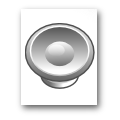Definify.com
Definition 2025
它
它
See also: 牠
Translingual
| Stroke order | |||
|---|---|---|---|
| | |||
Han character
它 (radical 40 宀+2, 5 strokes, cangjie input 十心 (JP), four-corner 30711, composition ⿱宀匕)
Derived characters
References
- KangXi: page 281, character 14
- Dai Kanwa Jiten: character 7057
- Dae Jaweon: page 551, character 14
- Hanyu Da Zidian: volume 2, page 910, character 3
- Unihan data for U+5B83
Chinese
|
simp. and trad. |
它 | |
|---|---|---|
Glyph origin
| Historical forms of the character 它
| ||||
|---|---|---|---|---|
| Oracle bone script | Bronze inscriptions | Bamboo and silk script | Large seal script | Small seal script |
 |
 |
 |
 |
 |
| Characters in the same phonetic series (它) (Zhengzhang, 2003) | |
|---|---|
| Old Chinese | |
| 佗 | *l̥ʰaːl, *l'aːl |
| 拕 | *l̥ʰaːl, *l'aːlʔ |
| 它 | *l̥ʰaːl |
| 蛇 | *l̥ʰaːl, *ɦljaːl, *lal |
| 袉 | *l̥ʰaːlʔ, *l'aːl, *l'aːlʔ |
| 鴕 | *l'aːl |
| 駝 | *l'aːl |
| 紽 | *l'aːl |
| 鮀 | *l'aːl |
| 陀 | *l'aːl |
| 沱 | *l'aːl, *l'aːlʔ |
| 跎 | *l'aːl |
| 詑 | *l'aːl, *l'aːlʔ, *hlel, *lal, *l̥ʰoːl |
| 酡 | *l'aːl |
| 迱 | *l'aːl |
| 舵 | *l'aːlʔ |
| 柁 | *l'aːlʔ |
| 鉈 | *ɦljaːl, *hljal |
Pictogram (象形) : a snake. This is now written as the derivative 蛇 (OC *l̥ʰaːl, *ɦljaːl, *lal).
The character was later borrowed for the then-homophonous third-person pronoun (“he/she/it”). Today 他 (tā) is used for male or gender-unspecified “he” and 她 (tā) for “she”.
Pronunciation
- Mandarin
- Cantonese (Jyutping): taa1
- Hakka (Sixian, PFS): thâ
- Min Nan (POJ): tha / thaⁿ
- Wu (Wiktionary): ta (T1)
- Mandarin
- (Standard Chinese, Beijing)+
- Pinyin:
- Zhuyin: ㄊㄚ
- Wade-Giles: t'a1
- Gwoyeu Romatzyh: ta
- IPA (key): /tʰa̠⁵⁵/
-

- (Standard Chinese, Beijing)+
- Cantonese
- (Standard Cantonese, Guangzhou)+
- Jyutping: taa1
- Yale: tā
- Cantonese Pinyin: taa1
- IPA (key): /tʰɑː⁵⁵/
- (Standard Cantonese, Guangzhou)+
- Hakka
- (Sixian, incl. Miaoli and Meinong)
- Pha̍k-fa-sṳ: thâ
- Hakka Romanization System: ta´
- Hagfa Pinyim: ta1
- IPA: /tʰa²⁴/
- (Sixian, incl. Miaoli and Meinong)
- Min Nan
- (Hokkien)
- Pe̍h-ōe-jī: tha / thaⁿ
- Tâi-lô: tha / thann
- Phofsit Daibuun: taf, tvaf
- IPA (Xiamen): /tʰa⁴⁴/, /tʰã⁴⁴/
- IPA (Quanzhou): /tʰa³³/, /tʰã³³/
- IPA (Zhangzhou): /tʰa⁴⁴/, /tʰã⁴⁴/
- IPA (Taipei): /tʰa⁴⁴/, /tʰã⁴⁴/
- IPA (Kaohsiung): /tʰa⁴⁴/, /tʰã⁴⁴/
- (Hokkien)
- Wu
- (Shanghainese)
- Wiktionary: ta (T1)
- IPA (key): /tᴀ⁵³/
- (Shanghainese)
| Rime | |
|---|---|
| Character | 它 |
| Reading # | 1/1 |
| Initial (聲) | 透 (6) |
| Final (韻) | 歌 (94) |
| Tone (調) | Level (Ø) |
| Openness (開合) | Open |
| Division (等) | I |
| Fanqie | 託何切 |
| Reconstructions | |
| Zhengzhang Shangfang |
/tʰɑ/ |
| Pan Wuyun |
/tʰɑ/ |
| Shao Rongfen |
/tʰɑ/ |
| Edwin Pulleyblank |
/tʰa/ |
| Li Rong |
/tʰɑ/ |
| Wang Li |
/tʰɑ/ |
| Bernard Karlgren |
/tʰɑ/ |
| Expected Mandarin Reflex |
tuō |
| Baxter-Sagart system 1.1 (2014) | |
|---|---|
| Character | 它 |
| Reading # | 1/1 |
| Modern Beijing (Pinyin) |
tā |
| Middle Chinese |
‹ tha › |
| Old Chinese |
/*l̥ˤaj/ |
| English | another |
Notes for Old Chinese notations in the Baxter-Sagart system: * Parentheses "()" indicate uncertain presence; | |
| Zhengzhang system (2003) | |
|---|---|
| Character | 它 |
| Reading # | 1/1 |
| No. | 12210 |
| Phonetic component |
它 |
| Rime group |
歌 |
| Rime subdivision |
1 |
| Corresponding MC rime |
佗 |
| Old Chinese |
/*l̥ʰaːl/ |
Definitions
它
See also
| Standard Chinese personal pronouns | |||
|---|---|---|---|
| Person | Singular | Plural | |
| 1st | — | 我 (wǒ) | 我們/我们 (wǒmen) |
| inclusive | 咱們/咱们 (zánmen) | ||
| 2nd | male/indefinite | 你 (nǐ) | 你們/你们 (nǐmen) |
| female | 妳/你 (nǐ) | 妳們/你们 (nǐmen) | |
| deity | 祢 (nǐ) | 祢們/祢们 (nǐmen) | |
| polite | 您 (nín) | 你們/你们 (nǐmen) 您們/您们 (nínmen) |
|
| 3rd | male/indefinite | 他 (tā) | 他們/他们 (tāmen) |
| female | 她 (tā) | 她們/她们 (tāmen) | |
| deity | 祂 (tā) | 祂們/祂们 (tāmen) | |
| animal | 牠/它 (tā) | 牠們/它们 (tāmen) | |
| inanimate | 它 | 它們/它们 (tāmen) | |
- (Classical Chinese, gender and number neutral - he, she, it, they) 其 (qí)
- (Min Nan, Wu, gender neutral - he, she, it) 伊 (yī)
- (Cantonese, gender neutral - he, she, it) 佢 (qú), 渠 (qú)
- 他 (tā) he, him
- 它 it
- 祂 (tā) he (deity)
- 牠/它 (tā) it (animal)
Compounds
Japanese
Kanji
它
- This term needs a translation to English. Please help out and add a translation, then remove the text
{{rfdef}}.